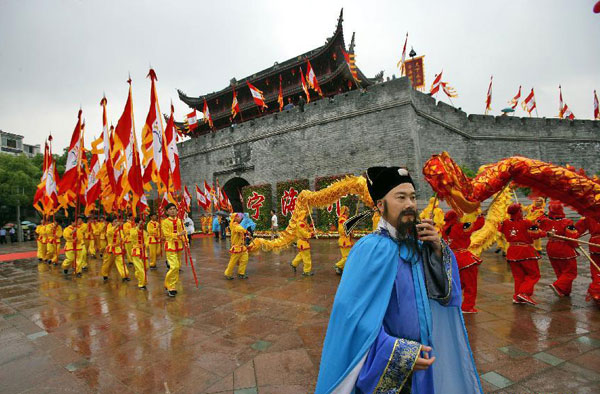Route walked by noted ancient Chinese traveler aims for world heritage
Around 400 years ago, Chinese explorer Xu Xiake started his 30-year-long adventure and travelled tens of thousands of miles across China. His notes and study of ancient Chinese geography were unprecedented. The day he embarked his journey, May 19, has been set as China's Tourism Day.
The Travel Diaries of Xu Xiake, a travel journal of Xu compiled by later generations, has proven to be of great scientific and literary value. Today, many of the places reviewed by Xu on his route have become popular tourist attractions, but more are little known.
Yesterday, a team that included experts, members of the national committee of CPPCC and government representatives of Ninghai county of Zhejiang province, where Xu started his journey, officially started the process to seek linear world heritage status for Xu Xiake's route.
By doing so, the team hopes to call for cultural heritage protection of the important sites along Xu's journey, which covers at least 19 of today's provinces and cities, including Zhejiang, Fujian, Guangdong, Guangxi, Jiangxi and Yunnan.
A linear world cultural heritage status can include both tangible and intangible cultural heritage along the route with unique cultural resources. Well-known examples are the Silk Road and the Beijing-Hangzhou Grand Canal.
However, applying for world cultural heritage status is often a long-term process.
In the next three years, the team will try to draw the most accurate map based on Xu's travels by investigating each important stop that was recorded. The team hopes the map will win support from central and local governments for the official application.
"Applying for world cultural heritage status can better protect and promote the tourism spots Xu visited," Bian Jinping, a member of the national committee of the CPPCC said. "It is also a way to promote the profound ancient Chinese culture among today's people."
Applying world cultural heritage status is not the only effort that today's people have made to recognize the ancient explorer, who is also regarded as China's Marco Polo.
In Ninghai country of Zhejiang province, the annual Xu Xiake Tourism Festival has been held 12 times to mark Ninghai as the proud starting point of Xu's adventure.

















